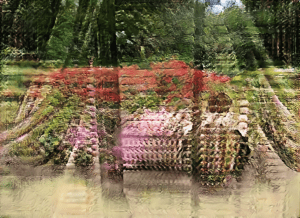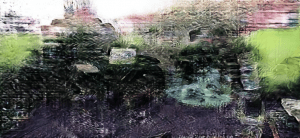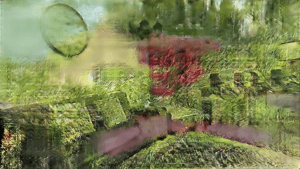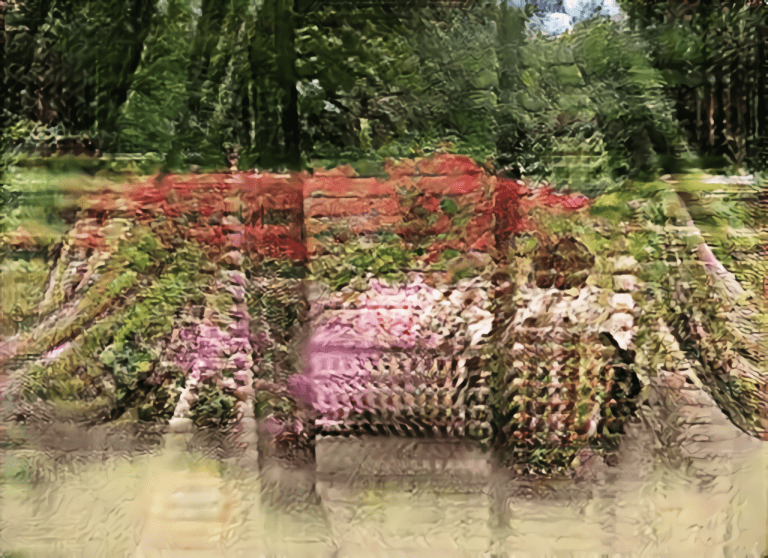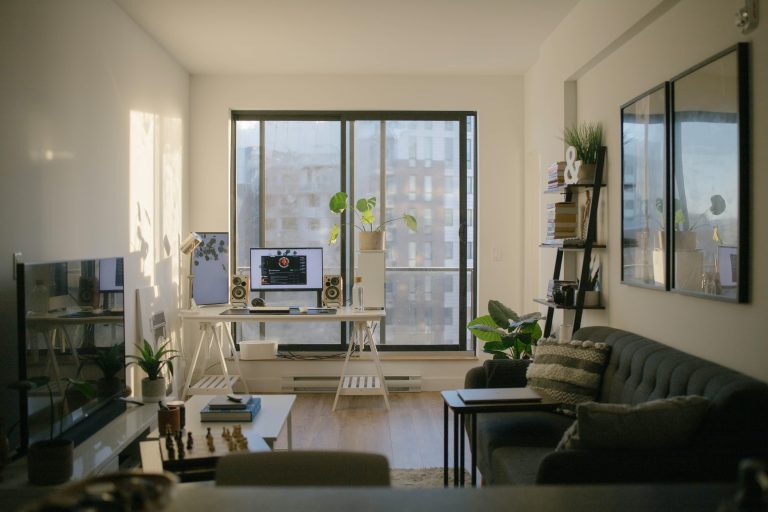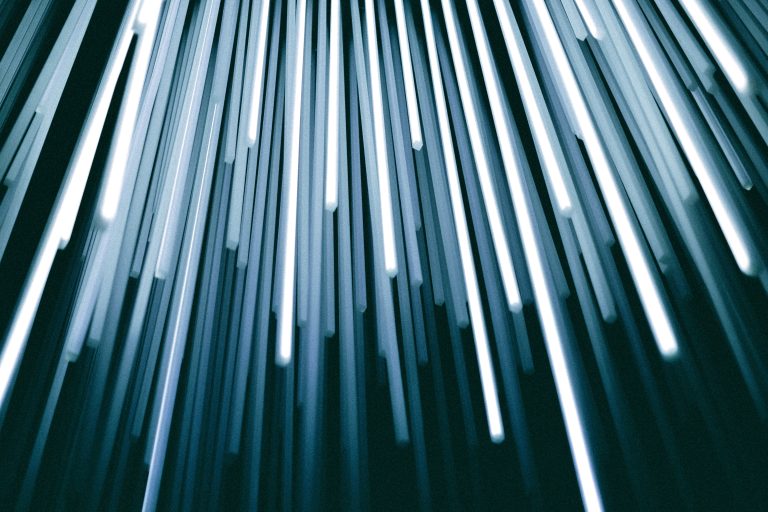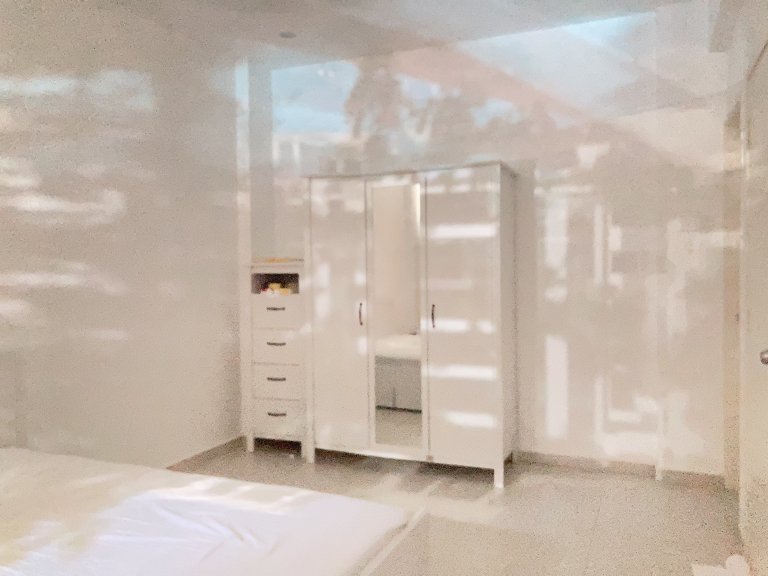Article
Collective Behaviour in the Time of Pandemic: Living Alone in Digital Dwelling
PreText
The Covid-19 pandemic has caused many people to live in an ambiguous norm situation. People today are either searching to recover or are found to be recorded with uncertainty, while fitting the new norm of living amidst the pandemic into their daily schedule. People are hoping to survive and feel secured within their own space. Additionally, many people are also) hoping to search for a new form of energy to build the ‘self’, in situations of coping with uncertain information reflected from digital media environment, in a manner that is provocative, slandering and full of comical parody. Yet the information is slowly shifting into a language of order and disorder, between the believed and disbelieved, discomfort and fear, towards situations that has affected the normal behaviour.
As mentioned by S. Manan… –
The continuous bombardment of information weaves an intricate metanarrative about COVID-19 to stand between factual truth and scepticism.
The major assumption of what really is the truth and scepticism represent the feeling of distractive and illusion of an unknown. People felt as though life has been prisoned and controlled as regarded by social representation and participation, which consequently lead to preferring to be alone and live a life in a shrinking blanket. They fell asleep full of uncertain dreams, while trying to push one’ self from conscious to subconscious, and fixing themselves with fictional language and news. The covid-19 pandemic has become a culture of transformation which not been presented before that lead to a continual of self-observation with new codes of hypothesis in the ocean of post-human condition. The merging of technology with the human’s mind and body has created an ambiguity between the real and the artificial, the original and the simulated, the organic and the mechanical, which perhaps may change the condition of human thinking, communication and culture with artificial life intelligence in programming the breeding process of human form in the future. As we see today, it seems as though tomorrow is about a subject of unpredictable and ambiguity of human experience, exposed to the need of a more flexible metaphors with which is to face a dynamic reality of the post digital age and fluidity of biological interaction.
In a digital world, the nuance of companionship is not limited to human communication, but rather how the human senses engage with the virtual experience provided by the digital realm.. A. Harun
PostHuman and Microorganism
We are dealing with two languages of time culture; both are facing the issue of survival, communication, spreading and presence. This is in regards to the behaviour of an object. An object of an extended life and extra-terrestrial intelligence in transforming human and its implication. Human has been digitalised and bounded with new political and environmental systems of a biological membrane, covering the flesh and anatomy of human form that gives complex phenomena such as imagination, technology and desire, and continuously evolves between them. The subjects of cultural and literary studies and social science are starting to pay attention to the emerging field of ‘posthuman studies’, with several books and articles rapidly expanding, and discussing on the situation of human life and energy, in order to find better solution and understand the contemporary imagination. Books such as How We Became Posthuman, Virtual bodies in cybernetics, literature, and informatics –
(Hayles 1999), have attempted to negotiate the synthesis of science fiction, cybernetics and artificial intelligence from within the tradition of literary criticism. An extension and exploration of new theoretical approaches that has seen a renaissance in theory, are now moving into new discourse in the institutional settings of humanities today. The studies and events that took place before and today had given so many clues and information about the condition of the future in order human as sapiens to prepare and be aware of possible catastrophise as well as its foreseen transformation.
The term of posthuman, First, it is used to mark the end of that period of social development known as humanism, and so in this sense it means ‘after humanism’.
Second, it refers to the fact that our traditional view of what constitutes a human being is now undergoing a profound transformation. It is argued that we can no longer think about being human in the same way we used to.
Third, the term refers to the general convergence of biology and technology to the point where they are increasingly becoming indistinguishable. In this sense the term posthuman is preferable to ‘post-biological’ (the two terms are sometimes interchanged) insofar as the decaying category of ‘human’ can be seen merely a subset of an increasingly virulent ‘techno-biology’ of which we might be but a transient phase If I had to summarise my own feelings about the posthuman condition, I would say we are nearing an awareness of the energy of existence — there is the tangible crackle of a storm in the air – Pepperell.R. (2003)
The Posthuman Condition – Consciousness Beyond the Brain. First published in hardback in 2003 in Great Britain by Intellect Books, PO Box 862, Bristol BS99 1DE, UK.
Humanists saw themselves as distinct beings, in an antagonistic relationship with their surroundings. Posthumans, on the other hand, regard their own being as embodied in an extended technological world…. The Posthuman Manifesto… Pepperell.R. (2003)
Consequently, humanists today are now confronting a new era of cultural system and beliefs, while also driving into a new technological climate, where the properties of science, knowledge and energy will emerge as uncertain and the question of curiosity –
(Hayles 1999), have attempted to negotiate the synthesis of science fiction, cybernetics and artificial intelligence from within the tradition of literary criticism. An extension and exploration of new theoretical approaches that has seen a renaissance in theory, are now moving into new discourse in the institutional settings of humanities today. The studies and events that took place before and today had given so many clues and information about the condition of the future in order human as sapiens to prepare and be aware of possible catastrophise as well as its foreseen transformation.
As mentioned by Fukuyama 2002,
(Our Posthuman Future) attend to increase uncertainty about human nature in the age of genetic manipulation and pharmaceutical engineering, and give consideration to the political and ethical implications of these technologies.
In line with Fukuyama, human nature will be facing the uncertainty of genetic manipulation and pharmaceutical engineering, that may threaten normal society into confronting the meaning of health science from this new microorganism which embedded the culture, psychology and thinking systems of a social pandemic, where viruses control the human movement and interaction.
Microbe is a living organism which are unique on its own, have great power and are able to change and mutate in an unimaginable way in the unseen world. They are everywhere, breathing and circulating together with human movement and are now a part of our life that consists of the bad, good and the ugly.
(Hayles 1999), have attempted to negotiate the synthesis of science fiction, cybernetics and artificial intelligence from within the tradition of literary criticism. An extension and exploration of new theoretical approaches that has seen a renaissance in theory, are now moving into new discourse in the institutional settings of humanities today. The studies and events that took place before and today had given so many clues and information about the condition of the future in order human as sapiens to prepare and be aware of possible catastrophise as well as its foreseen transformation.
Microorganism or microbe, is a microscopic organism, which may exist in its single-celled form or a colony of cells, especially a bacterium, virus, or fungus. – google dictionary is provided by Oxford Languages
Viruses became key objects for twentieth-century biochemistry and genetics research, and they were informational before they became integrated into computer culture. Computer viruses are often explained as if they were biological viruses. (2007: 92 – 93)…. S. Manan
As Shahruddin pointed out, we can go back to the third aspect of posthuman condition, where the term refers to the general convergence of biology and technology to the point where they are increasingly becoming indistinguishable. In this sense, the term posthuman is preferable to ‘post-biological’ (the two terms are sometimes interchanged) insofar as the decaying category of ‘human’ can be seen merely a subset of an increasingly virulent ‘techno-biology’ of which we might be but a transient phase. Interchangeably, it can also be called as ‘post- BioHuman” where it gives a response to the term of ‘techno-biology’ that utilizes biological systems, living organisms or parts of it to develop or create different products of the human nature in the age of genetic manipulation and pharmaceutical engineering, for example, the food of the future may come in the form of artificial food supplement.
he next upcoming milestone for humanity, Nicholas Negroponte – The US tech visionary, founder of the MIT Media Lab who was the first investor in the influential magazine Wired – said that the digital world is already integrated into our lives, and that what comes next will no longer be extrapolations of computing. Instead, bioengineering will be “one of the next big things.”
“We will have genetically modified humans and we will correct nature’s mistakes. It will be a very different future,” and Negroponte also discusses new ways of feeding the world with artificially produced food. “Creating meat that does not come from cows is a wonderful project, he says – Genetically modified food is the future and it’s a very important future.” An Interview.
https://english.elpais.com/elpais/2019/06/20/inenglish/1561045387_700191.html
The food industries will extend the concept of fast food into genetic food, where people will lunch with a plate of artificial rice and chicken, and drink from herbal extracted juice from an online digital service, which are also taking place today. Perhaps, GRAB services will deliver their product using drones, in the sense of making things easy and consumes less energy with more simplicity distribution.
The digital sensory intrusion is a pandemic calling for humans to abridge digital presence where less is more… A. Harun
Freedom of Comfort in relation to bio-environment and digital pandemic.
A 2018 report from the Malaysian Ministry of Housing and Local Government stated that there is an estimate of 118,310 units of low-cost housing in the country…
As the unpredictable situation of the pandemic continues, the social, mental, and emotional well-being of the populations will suffer. The heavily impacted groups are those living in the high-rise low-cost flats located in the bustling and congested urban areas throughout the country. … S. Fariz
In situation where pandemic spreads unceasingly, people live in anxiety, discomfort, weakness, confusion and hopelessness. Their life has been bounded to a limited, cramped and circulated space, full of unnecessary equipment’s and belongings that burden the vision and cellular membrane. People are now facing a conflict of choice in order to determine better selection between what is a priority and what is not. The freedom of comfort has been prisoned in an open bar. Many are prisoned by their own restriction of movement, and their inability to control their emotions while fearing instability and unforeseen future. While waiting for the unknown, how and what to be next.
The government has admitted the rising mental health cases as 35,000 distress calls were made to the Health Ministry’s Psychological Helpline between March and October 2020… S.Fariz
These have a huge effect on the general public’s home comfort and mental health, causing feelings of depression, anxiety, and fear…. P.NE. Nohuddin
Changing the behavioural system into the uncontrol, irrational and tortured of self representational, not only affected their body and soul but also the surrounding environment which involves the humidity, acoustic and visual comfort, indoor and outdoor. It has affected the human senses which consequently distracted the feeling of attitude and force towards an action of subconscious in handling the level of cognitive stability and rational processes.
As mentioned by N. Ibrahim…
Based on the Indoor Environment Quality literature, comfort is described through the following parameters: thermal, visual, acoustic and air quality. Comfort can also be seen as a cognitive-behavioural process, which involves the concepts of sense of control, habits, and emotions…
In order to cope with these phenomena, people tend to rely more on the media social technology as element of escapism by creating more virtual groups and partners for interaction. People listen and view an enormous amount of information in search for the freedom of expression and bridging individual closer within the virtual space, as mentioned by S.Manan…‘No communication, no community’, Where technology become as part of collective behaviour. As experienced by Hanif, this brings the concept of …
“self-enforced isolation”… has changed my relationship with technology… and the idea of Ubiquitous Comfort Technology… that computing technology will be everywhere in our environment and becomes part of the background that we do not notice them anymore, much like how the electric motor has become ubiquitous, powering almost every electrical appliance in our homes…
….. It has been documented that people are having dreams that are more lucid and weirder during the pandemic, which Streaming, Zooming, Doomscrolling, Tracking as part of major trend of global pattern…
Therefore, in this case, the concept refers to the second term of post-human condition… the fact that our traditional view of what constitutes a human being is now undergoing a profound transformation. It is argued that we can no longer think about being human in the same way we used to. Our behaviour has changed either directly or indirectly in seeking the freedom of space and the concept of interaction and communication, although people are living in the same space. Consequently, it reflects the energy of brain and body in the confinement of self.
Imagine being blasted with visuals and audio input non-stop in a confinement. It is digital torture! Other sensory are deprived of input as being bounded digitally means not able to smell the fresh air, feeling the gust of the wind or feeling the presence of real people in a casual manner – the feeling of sensations that make humans human, is fading…. A. Harun
After Text
The cause and effect of digital culture / torture, biological genetic manipulation and medical engineering was planned in order to move human into the next stage of bio-technological civilization, design the pattern of the planet and force the human attitude in to a different game changer. Humanists saw themselves as distinct beings, in an antagonistic relationship with their surroundings. Posthumans, on the other hand, regard their own being as embodied in an extended technological world….
The Posthuman Manifesto conclude
In this sense the convergence of natural biological and transformation of technology will be getting along and merging into a subset of an increasingly destructive course of ‘techno-biology’ for human to breathe and swim in a deep ocean, and therefore, human have to understand the basics of being a human, in order to stay in comfort and contemplating to our basic needs of own mother nature… an author.
Other Articles
Collective Behaviour in the Time of Pandemic: Living Alone in Digital Dwelling by Nasir Baharuddin PreText The Covid-19 pandemic has caused many people to live in an ambiguous norm situation. People today are either searching to recover or are found to be recorded with uncertainty, while fitting the new norm of living amidst the pandemic […]
COMFORT (and the lack of it) FOR THE URBAN POOR DURING PANDEMIC by Nazrita Ibrahim On the 25th of January 2020, the first case of COVID-19 was detected in Malaysia by three Chinese nationals who have been in close contact with a positive COVID-19 patient in Singapore [1]“[Breaking] 3 coronavirus cases confirmed in Johor Baru,” […]
Presence with Absence: Anecdote on Non-Participatory Digital Participation in a Pandemic by Afdallyna Harun For most people, the sense of presence is a comforting percipience. Presence embodies the value of existence, occurrence, companionship, empowerment, and transformation [1]Dufva, T., & Dufva, M. (2019). Grasping the future of the digital society. Futures, 107, 17-28. in other words, it is […]
Behavior Analytics on Energy Consumptions by Puteri NE Nohuddin Space and behaviour are deemed to have a significant impact on how humans interact with their surroundings. Due to this, the Movement of Restriction Order (MCO) during the COVID-19 pandemic has ignite a great deal of public outrage and grievances. As a consequence, it has affected […]
COVID-19 as a Biopolitics?: Between Digital Contagions & Social Complexity by Mohd Shahrudin Abd Manan Monologue: Is COVID-19 simply about a biological pandemic? Or is it more than that: did COVID-19 turn out to be a Black Swan that disrupts our very fundamental societal structure? If that is the case, shall COVID-19 be treated as […]
COMFORT AMIDST CHAOS by Dr. Shureen Faris Abdul. Shukor Imagine sharing 650 square feet of living space with twelve other family members of three generations during a nationwide lockdown due to a pandemic. A single unit flat on the 11th floor of a 17-story housing block occupying a total of 2380 units. At any given […]
Collective Behaviour in the Time of Pandemic: Living Alone in Digital Dwelling by Hanif Baharin Introduction At the time of writing, Malaysia is in its third lockdown (also known as Movement Control Order 3.0 or MCO 3.0), to control the Covid-19 pandemic. A study conducted in April 2020 by Dr. Shureen Faris, shows that the […]
